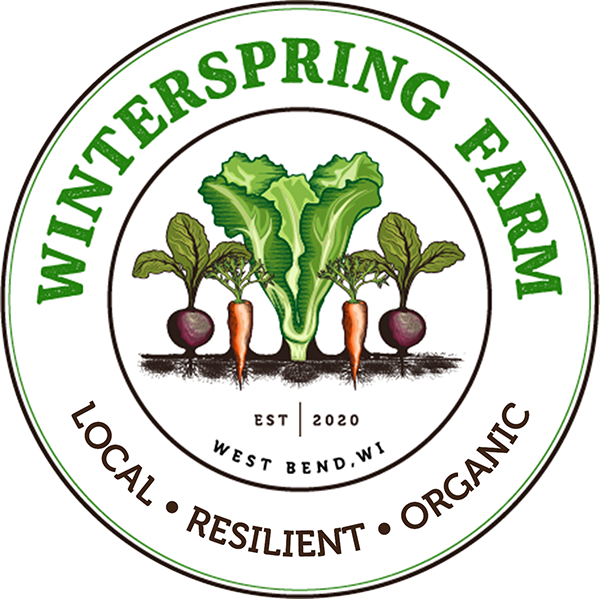Sweet Peppers
Sweet carmens and bell peppers in a harvest tote
Vegetable Profile: Sweet Peppers (Capsicum annuum)
Description
It couldn’t be late summer without the flashy show of glossy and delicious sweet peppers! While we grow some that have a blocky, squarish shape like the ones seen in stores, our star sweet pepper is Sweet Carmen variety. This tapered sweet pepper is well adapted to our short growing season, unlike most others that are selected for warmer climes. Sweet peppers are beloved for their succulent, crisp flesh and fruity flavor. Bell peppers are native to the tropical Americas, and grow there as a perennial. They readily cross-pollinate, which is what allows plant breeders to generate so many different varieties. Saving the seed will often not give you the same pepper as the parent plant! If you’re picking and choosing which foods to buy organic, put sweet peppers at the top of your list. Unlike chile peppers, which use high levels of capsaicin to ward off insects, sweet peppers grown in mass quantities require multiple applications of pesticides. Not on our farm!
Nutrition
When eaten raw, peppers contain lots of vitamin C. Cooked or raw peppers have many trace nutrients including vitamins E, K, and B6, potassium, manganese, fiber, folate, and thiamin. They support the circulatory system, stomach, and kidneys. They are considered a warming, energizing food.
Storage
To keep your peppers fresh and firm until use, store them in a water-tight container for up to a week in the fridge. Green peppers have a slightly longer shelf life than ripe peppers. Another option would be to freeze them. Simply wash, dry, and chop up your peppers with stems, pith, and seeds removed. Toss into a gallon freezer bag with a label and date and place in the freezer.
Use
Fresh: Slice them into bite-size pieces and add to a salad. We love them on Greek-style orzo. Or, slice them lengthwise and dip them in a creamy sauce.
Cooked: Caramelize on the stove with onions, salt, and pepper. Add it to a stir fry. The Sweet Carmens make great stuffed peppers, with Italian seasoned beef, tomato sauce, and cheese.
Frozen: You can cook with frozen peppers pretty much the same way you would fresh. Don’t bother with defrosting them, but allow for time to cook through accordingly. You can even chop them up finer while frozen if desired. They work great in soups this way.
Sources:
SpecialtyProduce.com
The New Whole Foods Encyclopedia by Rebecca Wood
Asparagus to Zucchini by Fairshare Coalition
Produce: A fruit and vegetable lover's guide by Bruce Beck
Our own experience!









